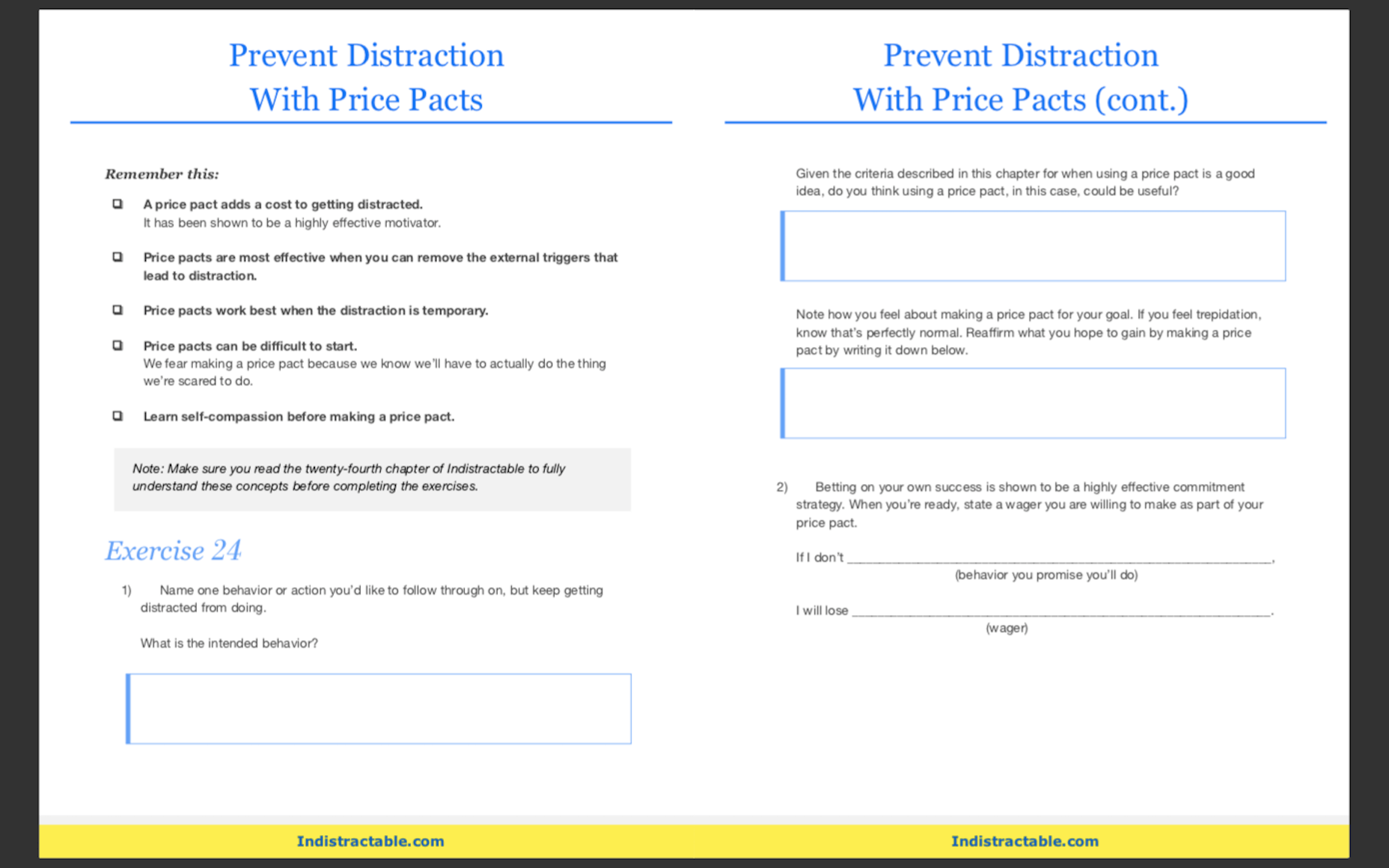Telecommuting is finally getting some respect. What was once an obscure work arrangement confined to a small number of jobs is now considered “the new normal” and an important factor for many job seekers.
Since 2005, regular telecommuting has increased by 173 percent. And since the onset of COVID-19, telecommuting has become a necessity, helping many organizations keep the proverbial doors open. Around half of the American workforce is telecommuting during the pandemic, more than double the amount who did so even occasionally in 2017–2018.
Many are hailing telecommuting as the future of work. The World Economic Forum has called it “one of the biggest drivers of transformation” in the workforce. Technological advances ranging from the rise of cloud-based SaaS to improvements in internet connectivity and videoconferencing have made telecommuting easier and more practical. Remote work in some form — whether it’s part of the time or all of the time — is likely here to stay.
This is good news for employees and employers alike.
Telecommuters are an average of 35 to 40 percent more productive than office workers, and employees benefit from better work-life balance, among other things
But that doesn’t mean telecommuting isn’t without challenges. Organizations and employees that prepare and make a conscious effort to mitigate the downsides and maximize the benefits will get the most out of telecommuting. This guide aims to give you the background to do just that.
Here’s what you’ll learn in the chapters ahead:
- Chapter 1: Introduction. The first chapter is an introduction to telecommuting and a preview of what you will learn in this guide.
- Chapter 2: What is telecommuting? This chapter will explain what telecommuting is, the types of telecommuting, and which jobs are best suited for telecommuting.
- Chapter 3: Telecommuting vs working from home. Is there a difference between telecommuting, working from home, and other common terms? This chapter gives you an overview.
- Chapter 4: The history of telecommuting. In this chapter, we’ll give you a brief history of telecommuting, as well as some current trends and statistics.
- Chapter 5: Advantages of telecommuting. Here we look at how telecommuting makes life better for both employers and employees.
- Chapter 6: Disadvantages of telecommuting. Telecommuting isn’t a cure-all. This chapter covers some of the potential downsides.
- Chapter 7: How to create a successful telecommuting policy. This chapter addresses the legal considerations of telecommuting, why employers need a telecommuting policy, how to determine which positions are eligible to telecommute, and how to create prudent cybersecurity measures.
- Chapter 8: Best practices for effective telecommuting. This chapter shares telecommuting best practices, including tips to help employees focus and be more productive, tips for managers of telecommuters, and a list of tools telecommuters need to be successful.
Though much of this guide is intended for both managers and employees who are making the switch to telecommuting, some aspects will be valuable to organizations whose employees have been working remotely for some time. Whether you’re an employee or a manager, there’s always more you can learn and ways to be more efficient and get more out of the telecommuting experience.
Telecommuting vs working from home
Telecommuting
Working from home
Remote work
Distributed work
Several of these terms seem to refer to the same thing, but do they?
“Distance work, remote work, geographically dispersed work — all these terms encompass a variety of work arrangements,” says Debra Dinnocenzo, founder of Virtual Works!, a telecommuting consultancy. “There are no agreed-upon definitions.”
While many people use the terms interchangeably, they have subtle differences in connotation. Telecommuting is the oldest of these terms; it’s been in use for nearly 50 years. At the time it was coined, the term spoke to the potential of then-emerging telecommunications technology to allow workers to transcend the downsides of commuting to the office.
Since then, the nature of knowledge work has changed. Mobile devices, SaaS tools, near-ubiquitous internet connectivity, globalization, and the increase in independent contractors has led to a multitude of new workplace configurations — and new terms to describe them.
So while telecommuting is rapidly growing in practice, the term itself is waning in popularity. According to Global Workplace Analytics, many people and organizations are moving away from using the terms telework and telecommuting, instead using remote work, distributed work, mobile work, smart working (U.K.), and workshifting (Canada).
Telecommuting vs working from home
Telecommuting and working from home are two commonly used phrases to describe similar work arrangements.
Telecommuters are employees who have jobs that are usually done in an office but work offsite part time or full time. They may need to come to an office for certain tasks or events, or they may never meet their team in person.
This may be a formal arrangement or done ad-hoc. They most often work from home but can work from anywhere as long as their jobs are completed. Telecommuters are usually knowledge workers whose work is enabled by technology.
“I’d say that telecommuting incorporates some element of periodic, onsite work,” says Blake Stockton, business analyst at Fit Small Business. “Although both telecommuting and work from home rely heavily on communication tools like email, Slack, Trello, and Telegram, some would associate work from home with being geographically distant or, on certain occasions, flat-out uncontactable.”
Telecommuting as a concept typically refers to employees, rather than freelancers and the self-employed. (The “commuting” part implies there is an office they would otherwise be commuting to.) However, some may call self-employed remote workers telecommuters as well. In this guide, we’re referring to an employee arrangement, although for topics like best practices, there is crossover with remote contractors as well.
Working from home means just that: working from home. Some who work from home may have a home office or a home-based business. Not all people who work from home are telecommuters, just as all telecommuters don’t work from home, but there is crossover between the two.
The history of telecommuting
The terms “telecommuting” and “telework” were coined in 1973 by former NASA engineer Jack Nilles in the book The Telecommunications-Transportation Tradeoff. At the time, the OPEC oil crisis was in full swing, causing high fuel prices and long lines at gas stations across the U.S. Nilles proposed telecommuting as an alternative to transportation, and a solution to the growing problems of traffic, sprawl, and environmental degradation.
Over the next two decades, telecommuting grew slowly. In 1979, author Frank Schiff coined the term “flexplace,” and brought greater attention to the concept with an article for The Washington Post called “Working at Home Can Save Gasoline.” The first conference on telework took place the following year.
In the 1980s, retailer JC Penney began hiring home-based call center workers to take catalog orders. Throughout the rest of the decade, telecommuting slowly saw some adoption as fax machines and personal computers became widespread, enabling some office workers to begin working from home.
The modern history of telecommuting
The Clean Air Act Amendments of 1990 raised awareness of air quality issues and encouraged a new wave of activity to support telecommuting. The federal government established the Interagency Telecommuting Pilot Project to popularize teleworking for government agencies in Washington, D.C., in 1992. Four years later, it implemented the National Telecommuting Initiative to help workers find teleworking opportunities. Major corporate players joined in, with AT&T creating an Employee Telecommuting Day and American Express transitioning its travel-related sales division to virtual offices.
Telecommuting saw huge growth in the late 2000s and 2010s, as improved internet connectivity and the growth of cloud computing and SaaS tools made it easier and more practical. According to Global Workplace Analytics, telecommuting has increased 173 percent since 2005. Some companies, such as Automattic (the web development company that created WordPress) and social media management software Buffer, have established themselves as entirely remote companies.
2020 has seen an unprecedented explosion in telecommuting worldwide due primarily to the COVID-19 pandemic. While we can’t know the future, it seems likely this will prove to be a turning point for wider permanent adoption of telecommuting.
Telecommuting trends and statistics
To get a better understanding of who telecommutes and how often, let’s take a look at some telecommuting statistics gathered from various sources and surveys over the past few years.
Who is telecommuting?
According to Global Workplace Analytics’ analysis of American Community Survey data, a typical telecommuter is
- College educated
- 45 years old or older
- Earns an annual salary of at least $58,000
- Works for a company with more than 100 employees
Of those who telecommute, 75 percent earn more than $65,000 per year, putting them in the upper 80th percentile of all employees — home- and office-based. In more than half of the top U.S. metro areas, telecommuting exceeds public transportation as the commute option of choice. It has grown far faster than any other commute mode, such as public transit, bicycling, or driving.
In enterprises, telecommuting is popular among executives and high-ranking managers. According to an Owl Labs survey, there are 18 percent more executives working remotely than there are working onsite. Forty-six percent of C-suite members and 55 percent of VPs work remotely at least part of the time.
Size of the telecommuting workforce
- According to American Community Service data from 2018 (the latest data currently available), 5 million full-time employees, or 3.6 percent of the U.S. workforce, is telecommuting half the time or more.
- IWG, a remote workspace provider, estimates that 50 percent of the global workforce telecommutes at least once a week.
- Owl Labs estimates that 54 percent of U.S. workers work remotely at least once per month, 48 percent work remotely at least once per week, and 30 percent work remotely full time.
Telecommuting productivity statistics
How does telecommuting impact productivity? Let’s look at the numbers:
- A 2014 Stanford study showed that call center employees increased their productivity by 13 percent when they worked from home.
- A similar study by the University of Texas found that telecommuters worked, on average, five to seven hours longer than their in-office counterparts.
- In a survey by CoSo Cloud, 77 percent of remote employees reported being more productive when working from home.
- Statistics compiled by Global Workplace Analytics show that more than two-thirds of employers report increased productivity among telecommuters. Best Buy, British Telecom, Dow Chemical, and others report that telecommuters are 35–40 percent more productive, while American Express teleworkers have a 43 percent edge over their office counterparts.
The history of telecommuting is one of continued growth and greater adoption, and the current trends and statistics seem to indicate that’s likely to continue for the foreseeable future. And it’s no wonder, with all the advantages that telecommuting can bring. In the next chapter, we take a look at some of those benefits.
Advantages of telecommuting
Telecommuting is an attractive proposition for many office employees, but they aren’t the only ones who benefit. Employers also have a lot to gain from a thoughtfully designed — and well-executed — work-from-anywhere plan.
The pandemic gave employers a compelling reason to start telecommuting programs; as a result, there have been many opportunities to study the phenomenon. Below are some of the benefits of telecommuting, many of which were known before the current crisis, and some of which have become clear only recently.
1. Both employers and employees save money
Commuting to and working in an office costs both employers and employees big bucks. These expenses are reduced when workers telecommute. Employees working from home or close to their residence can save between $2,500 and $5,000 per year (or more) when telecommuting since they no longer have to pay for transportation, parking, and lunch on workdays. A survey by CosoCloud showed that 30 percent of remote workers reported saving as much as $5,240 per year.
For employers, telecommuting can reduce or eliminate the costs associated with maintaining an office. The primary savings are in real estate, but additional savings come from reductions in parking spaces, utilities, facility compliance costs, office supplies, travel subsidies, business travel expenses, and more. Global Workplace Analytics conservatively estimates that for every employee who telecommutes half-time, the employer saves an average of $11,000 per year.
2. Employees are more productive
While it may seem that out-of-sight employees will slack off, anecdotal evidence, research surveys, and scientific studies all seem to show the opposite. As we listed in the previous chapter, the statistics show that telecommuters are more productive than their in-office counterparts.
Why the increase in productivity? Employees who telecommute can control their environment and work in a manner that best suits them. They don’t have to deal with the interruptions and distractions that so often happen in the office.
That’s not to say telecommuting can’t have its own distractions. (We’ll discuss those in the next chapter.) But by following the best practices we discuss later in this guide, employers and workers can achieve true productivity gains with telecommuting.
3. Employees have more flexibility and a better work-life balance
Many employees are attracted to telecommuting because it gives them more control over their time. The flexibility of telecommuting allows workers to work during the hours they are most productive, take healthier breaks, and tend to the other responsibilities in their lives like household chores, personal errands, and caring for their families and children. This flexibility usually results in better work-life balance, happier employees, and greater productivity.
“The advantages of telecommuting include avoiding a stressful commute to work and having a more flexible schedule,” says Stockton. “A telecommuting employee has the luxury of eating lunch at home and being able to exercise in the middle of the day.”
Employees also get the time back they would otherwise spend commuting — for a half-time telecommuter, that saves 11 workdays per year. Extreme commuters can save more than three times that amount. That’s time better spent working, relaxing, or taking care of non-work responsibilities.
4. Employers can hire from a wider talent pool
Companies that offer the opportunity to telecommute are no longer restricted to hiring professionals within driving distance of the office or left paying expensive relocation costs. Having access to a global talent pool also opens up positions to a much broader and more competitive range of applicants, allowing employers to hire the candidate who is the best fit for the job, regardless of where they live. This paves the way to a more diverse and more balanced workforce.
5. Teams experience improved morale and higher employee retention
In addition to being more productive, telecommuters are also happier and enjoy their jobs more. A survey by OwlLabs found that 83 percent of employees said having the option to telecommute would make them happier. Similar percentages of employees indicated it would make them feel more trusted, alleviate stress, and improve their health and well-being, making them more likely to recommend their company as a good place to work. Telecommuters were also 13 times more likely than onsite workers to say they planned to stay in their current job for the next five years.
For employers, happier and healthier employees mean less turnover and greater employee retention, fewer missed days of work due to illness, and a more motivated workforce. These all add up to direct savings — and a more enjoyable working environment for everyone.
6. Enterprises improve their business continuity
COVID-19 has made clear another benefit of telecommuting: the impact on business continuity. “Telecommuting has saved the day during this pandemic. People talk about getting back to work, but many of us are still working. This couldn’t have happened 20 years ago,” says Dinnocenzo.
The disruption caused by the pandemic won’t soon be forgotten. Organizations that want to remain resilient through unexpected events, while creating a desirable work environment to attract and retain talent, now see the importance of successfully implementing a telecommuting program.
Disadvantages of telecommuting
Though telecommuting has a lot of benefits, it comes with its share of challenges and disadvantages as well. While 83 percent of companies reported their transition to telecommuting during the COVID-19 pandemic was positive, they overwhelmingly said that success came only after overcoming difficulties in the transition.
It’s important to be aware of the potential disadvantages of telecommuting so you can properly prepare. Many of these aren’t necessarily a problem with telecommuting itself but with how it’s implemented. You can mitigate these issues by taking the steps laid out in the next two chapters.
1. Managers have less oversight over employees
One reason telecommuting hasn’t been widely adopted sooner is employers’ fear that once workers are offsite — and out-of-sight — they will have no idea if workers are actually working. It’s true: For managers who are used to micromanaging or who need direct oversight over their employees, that’s simply not possible with telecommuting. For telecommuting to be successful, managers must trust their employees, relinquish some amount of control, and create clear performance benchmarks.
2. Employees can be more vulnerable to distractions
Getting distracted can be a problem for anyone who works on a computer. This is arguably even worse in an office, as you’re frequently being interrupted. But there’s no doubt telecommuting can bring a whole new set of temptations and distractions. If you’re working from home, household chores may start to look appealing, not to mention TV, social media, family and roommates, or just taking a walk. Even when workers remain disciplined, team communication apps can disrupt focus. Slack has found that the average worker has the app open 10 hours per weekday!
The ability of telecommuters to focus depends on the individual employee and the company culture. While many workers can flourish in a telecommuting situation, some may not. Clear benchmarks can serve as motivators for employees who find the distractions of home difficult to overcome.
3. Employers need to address security concerns
Another common concern for employers, especially larger enterprises or those dealing with sensitive information, is security. Allowing workers to telecommute can open up a whole range of vulnerabilities. Employees may work from insecure networks, such as a coffee shop, leaving network traffic exposed. They may access sensitive data from unsecured devices or expose them to others outside the office. They may back up data on personal devices.
These are valid concerns. IT security for telecommuters is different than for security for in-office workers. However, you can address these concerns through policies and training, which we’ll address in the next chapter.
4. Unplugging after work can be difficult
According to a study by Buffer, the biggest challenge remote workers face is being able to unplug after work hours. It might sound like a paradox, but telecommuting can make work-life balance more difficult because there’s less of a clear delineation between work and leisure time.
One study found that U.S. employees who switched to remote work once the COVID-19 pandemic hit were logged in for an extra three hours per day. Surveys have also shown that many telecommuters work more hours and take less vacation time than they would if they worked onsite. While this may sound like a benefit to some employers, it can lead to burnout and exhaustion.
5. Team members may feel lonely
For many employees, the lack of social interaction that comes naturally in an office can be a big disadvantage of telecommuting. The Buffer report found that 19 percent of remote employees report loneliness as their biggest challenge. The CoSo Cloud survey found that more than half of remote employees say they feel disconnected from in-office employees. The lack of “water cooler” conversations can hit extroverts particularly hard.
To maintain team rapport, managers need to be more conscious and creative about finding ways to bring people together, whether through regular in-person events, online team-building activities, or casual video meetings that encourage socializing.
6. Some types of work suffer when telecommuting
While the COVID-19 pandemic is making it clear that more jobs than we thought can be done from home, some types of work remain less effective when done by telecommuters.
In the past few years, companies such as Yahoo and IBM banned telecommuting, citing declines in collaboration and innovation. While working alone can boost productivity, isolation can also prevent spontaneity, creativity, and happy accidents that can happen when people work together.
For creative teams who rely on group brainstorming and new ideas, getting the creative energy flowing in person can be the superior option. And for teams that work closely with physical items, telecommuting can also be a hindrance.
Dinnocenzo relays an example: “I was working with a company that makes lab equipment. They do a lot of process improvement and problem resolution. They’ve found it to be a challenge to do work remotely. They work directly with the equipment, and for them, it’s easier to just do it together in a room. Until technology advances, some things are just harder to do remotely.”
How to create a successful telecommuting policy
You can minimize many of the disadvantages mentioned in the previous section by creating a telecommuting policy, management style, and best practices that stress the benefits of telecommuting while avoiding its potential pitfalls.
While successful telecommuting must be founded on trust in your employees, creating a clear telecommuting policy will help clarify employer and employee responsibilities and save you headaches down the line.
What is a telecommuting policy?
During COVID-19, telecommuting has been essential to keeping many organizations running. Every organization that has workers who can telecommute needs a telecommuting policy. Even if you don’t plan to make telecommuting an option for all employees, you at least need a plan for telecommuting during emergencies, like the COVID-19 pandemic. By creating and enforcing a telecommuting policy, you can lay out what’s expected of both employees and employers.
A telecommuting policy should determine which employees are eligible for telecommuting and when; how these employees can switch to telecommuting; and the practices, conditions, expectations, and tools they need to use while telecommuting. The policy should be flexible enough to accommodate changes and be a continuous work in progress as you discover the most effective practices for telecommuting for your organization.
Legal considerations of telecommuting
It’s important for employers to consult their legal counsel before beginning a telecommuting program or working on a telecommuting policy. If you have to begin telecommuting before your policy is in place, ask legal for guidance as soon as you’re able, because telecommuting can impact compliance in various areas, such as
- Wage and timekeeping. Federal and state wage and hour laws still apply for telecommuters. If nonexempt employees are allowed to telecommute, it’s important to track their actual work hours to ensure compliance with the Fair Labor Standards Act (FLSA).
- Equal Employment Opportunity compliance. Equal employment opportunity laws mandate nondiscrimination in wages, hours, and other terms and conditions of employment.
- Workers’ compensation. Many workers’ compensation laws don’t distinguish between telecommuters and office-based workers, so be sure to clarify liability and safety issues for offsite workers.
- Privacy and confidentiality. Evaluate how having employees offsite may impact compliance with data privacy laws and any other confidentiality standards relevant to your business.
- Independent contractor status. Sometimes employers attempt to avoid legal issues by classifying offsite workers as independent contractors. However, if the individuals aren’t truly independent contractors, misclassification can lead to violations of a range of wage, tax, and employment laws, opening you up to criminal penalties.
Determining eligibility for telecommuting
The first step in creating a telecommuting policy is to determine who is eligible to telecommute and when they are eligible to do so. Organizations implement a broad range of policies that vary from allowing workers to telecommute full time, whenever they want, or a certain number of days per week.
- Which roles are eligible? Telecommuting eligibility can be determined by role or job title, as certain jobs are well-suited for telecommuting, while others may be better done onsite.
- Which individuals are eligible? Individual factors, such as meeting certain performance metrics or length of time spent at the company, can be factored into telecommuting eligibility.
- How often are employees able to telecommute? Do you want to limit the amount of time employees can telecommute? Flexible work policies may limit telecommuting to certain days or a certain percentage of overall time worked.
Cybersecurity for telecommuters
As we mentioned in the last chapter, having employees work offsite can bring new security risks. Work with your IT department to create a technology security plan and policy for all telecommuters, and then provide them with the tools and training they need to be compliant.
Don’t overlook the importance of training once the policy has been developed. GetApp found that despite receiving confidential business data at their remote location, just over half of remote employees say they received internet security training.
When developing your security policy and IT guidelines for telecommuting employees, here are some potential practices to include:
- Keep a current inventory of devices that have GPS tracking turned on.
- Ensure devices are password-protected and up to date on security patches.
- Ensure devices and traffic are encrypted.
- Address whether or not employees are permitted to use personal devices for work. If so, clarify how your security policy applies.
- Install software to remotely wipe devices if they are lost or stolen.
- Provide guidelines on passwords and/or use a password manager such as LastPass.
- Document procedures for acceptable remote access. Do you want to limit remote access to sensitive data? Consider requiring a VPN to access company resources and using endpoint security software.
- Give guidance on the types of public Wi-Fi networks telecommuters can use, if any.
- Require multifactor authentication to access company accounts.
- Educate your employees on the dangers of phishing. Phishing is a cyberattack where someone tries to obtain sensitive information through emails or other communications designed to look like they’re from a trustworthy party.
- Use secure forms from JotForm to collect data internally.
Creating a telecommuting agreement
Once you’ve drafted your telecommuting policy, it’s time to create an agreement for employees to sign. A signed agreement helps guide a telecommuting arrangement and can be used to settle any disputes.
If you use one of JotForm’s agreement templates, your telecommuting agreements will automatically be saved as secure PDFs that can easily be downloaded, shared with all involved parties, or printed for future reference.
Best practices for effective telecommuting
In the last chapter, we discussed how many of the challenges associated with telecommuting can be overcome with a good telecommuting policy. But telecommuters need more than a policy to be successful. They need the right tools, support from their managers, and good work habits to stay focused, healthy, and productive.
In this chapter, we discuss best practices and tips for both telecommuting employees and managers, the importance of a proper workspace, and the essential equipment and software that all distributed teams need.
Tips and guidelines for telecommuting employees
Create a work routine
Some remote workers are allowed to work at the time that best suits their schedule and natural rhythms. Are you an early bird who likes to start before the sun is up? Or a night owl who’s most productive burning the midnight oil?
If your job doesn’t require set hours, you get to choose the time that works for you. Take advantage of this, but be sure to maintain consistency.
Working at the same time every day encourages focus and helps you get into the proper mindset of “going to work.” It also helps you turn off when you’re done, so you don’t feel like you’re always working. For more tips on creating a daily work routine, check out our article on being productive while working from home.
Take charge of your time
When you’ve carved out a routine, protect your time from family, friends, and coworkers. Start each day with an action plan of prioritized tasks to complete. Henry O’Loughlin, founder of remote work resources blog Buildremote, recommends blocking off time on your calendar to get things done, free from interruption.
“Telecommuting is an advantage in that people can’t see you at your desk and stop by to chat,” O’Loughlin says. “To capitalize on that, block off time on your calendar to work on specific tasks. That will ensure people don’t book meetings or bother you during that time.”
Prioritize focus
Telecommuters have a whole new world of distractions that could potentially take time away from work — from household chores and noisy roommates to phone notifications, social media, and distracting websites.
To stay focused, create a suitable workspace. Whether it’s a home office, a co-working space, or even the back corner of your local Starbucks, have a place that facilitates productivity with minimal interruption.
Noise-canceling headphones are a great investment to help you “get into the zone.” Queue up your favorite playlist, or use a service like brain.fm, which uses a science-based approach to create personalized focus-enhancing playlists. If you find music distracting, try a white noise app or a site like Coffitivity that plays ambient sounds.
Once you’re settled in, make a plan for how you want your workday to go. One method is to break work out into timed blocks as laid out in the Pomodoro Technique, which recommends a 25-minute focus session followed by a short break. Apps and browser plugins such as RescueTime, StayFocusd, and Strict Workflow can help you track your time and block distracting websites. When you finish a focused session, reward yourself with a quick break to indulge in some of those juicy distractions.
Check in with your team regularly
When you’re not in the office, it’s easy to feel disconnected from your team. To make sure you’re on the same page, be transparent and communicate, even if it’s just for a friendly chat. Let your manager know if you run into any issues, and keep them in the loop.
One caveat: Be careful that your team chats don’t become a way to avoid doing real work. “When people start working from home (managers and employees), the instinct is to be more available and to check in more frequently. That decreases the amount of focused, distraction-free work you can get done,” says O’Loughlin.
Turn off when you’re not at work
One of the main challenges of telecommuting is that the boundary between work hours and non-work hours can begin to blur, leading to overwork and burnout. Make sure to divide the two as much as you can, and when you’re not working, avoid the temptation to check your work email or messaging app.
“Employees need to find an ‘off’ when telecommuting. If they are constantly under the stress of work in their home environment, telecommuting won’t be a good experience,” says Stockton.
Tips and guidelines for employers
While managers are often concerned about how telecommuting employees make use of their time, the success of a telecommuting program ultimately depends on employers. Managing remote workers requires a different approach than managing onsite workers, and for some managers, the adjustment can require a shift in attitudes and expectations. Here are some tips for team leaders managing telecommuting employees.
Set clear expectations
For a telecommuting program to be effective, managers need to set clear expectations for remote workers. While this can be difficult at first, it’s a blessing in disguise for many organizations that are forced to examine and communicate the metrics and tasks that are most important, leading to improved focus and efficiency across the board.
“Remote work really should facilitate better performance management, because you have to be clear about people’s expectations and their deliverables,” says Dinnocenzo. “If you can’t be clear about that, it’s not going to work. We’ve gotten away with not being clear about it in the office, because I would just see you there and assume you’re working, which was a naive assumption.”
Respect employees’ time
O’Loughlin cautions managers to respect employees’ time. “As a manager, respect office hours. I’ve heard a number of people say they start working more when they switch to telecommuting because their boss knows they’re always available. That’s dangerous for employee happiness. As a manager, make sure you don’t email after hours or expect responses out of normal hours.”
Dinnocenzo agrees: “When an organization isn’t clear about where the boundaries are, people who work from home feel like they should answer their phone or be responding to emails and their bosses all the time. Managers need to model healthy work hours for their employees.”
Stay in touch, but don’t over-communicate
Obviously, it’s important to stay in touch with your employees while telecommuting. But for managers who are used to being very involved, this can pose a challenge. For a telecommuting program to work, you need to trust your employees to get their jobs done and give them the space to do this.
“Build a culture that encourages people to sign off email and chat tools, and to have fewer meetings,” O’Loughlin recommends. “That increases distraction-free work, which is more productive and more fulfilling.”
Stockton adds,“Companies should encourage employees to have ‘snooze’ times for communication tools.”
Why telecommuters need the right workspace and equipment
For regular telecommuters, having a proper workspace, such as a home office or a desk at a coworking facility, is critical. Ensuring your telecommuters have a safe workspace not only helps them perform their best but helps your company avoid risks and liability issues.
“Odd though it may seem, there’s been anecdotal evidence that chiropractors have seen a jump in demand due to more telecommuting, and injuries from poor at-home working environments. Employers should equip their employees with effective ergonomic office supplies to work more effectively,” says Stockton.
Telecommuters also need the right equipment to do their job. Whatever tools they need onsite they also need offsite — and potentially additional ones. These requirements will vary by company and role, but a typical telecommuter will at least need a laptop, a strong and secure internet connection, and all the software they need to do their job. (See the list below for software recommendations.)
If they have a customer-facing role, they may need a suitable camera and background for video calls, a headset, and any other communication tools. Your policy should specify the equipment your company will provide, and what (if any) the telecommuter will provide (such as a desk or other office furnishings).
Investing in the right technology for telecommuting
While hardware, equipment, and workspace are critical to set the stage, most telecommuters get their work done using cloud-based software. These software tools are the glue that holds remote teams together, making telecommuting practical and scalable for teams of all sizes.
One of the most important things an employer can do is provide employees with an effective set of tools and train them on how to use them. Here’s the baseline of telecommuting software every distributed team needs in order to collaborate and stay on track:
- Communication platform. A communication platform is essential for keeping in touch while telecommuting. Though traditional methods, such as email and phone, have their place, it’s a good idea to use a real-time chat app like Slack, which allows teams to stay in touch via text, video, and audio, and organize communications into channels. Other good options include Microsoft Teams and Cisco Webex Teams for enterprises, or Flock, Discord, or Chanty for smaller teams.
- Cloud file-sharing platform. Using cloud-based file-sharing platforms such as Google Drive or Dropbox is essential for distributed teams. This allows everyone to access, share, and collaborate on files while protecting company information via permission and version controls.
- Videoconferencing software. Videoconferencing software like Zoom and Google Meet has become synonymous with telecommuting and for good reason. It’s the best way to communicate on a personal level while remote.
- Project management software. We’ve talked about the importance of setting clear benchmarks for telecommuters. They need milestones to make sure they’re completing important work that moves projects forward. Project management software supports this objective, helping to coordinate work and assign tasks. Some of the top choices include Asana, Trello, and monday.com.
As we’ve learned in this guide, telecommuting can help businesses operate during emergencies, cut costs, help the environment, and access better talent, all while making employees happier and more productive. But that doesn’t mean telecommuting has no challenges and downsides. Implementing a successful telecommuting program requires an organized and dedicated effort from both employees and employers.
While we don’t know what the future will bring, telecommuting will likely continue to become a bigger part of the way we work. We hope this guide helps your telecommuting journey be the best it can be.
Meet the telecommuting experts
Debra A. Dinnocenzo
Debra A. Dinnocenzo is the founder and president of VirtualWorks!, a learning and development firm that specializes in virtual work issues, such as telecommuting, leading from a distance, virtual teams, and work-life balance in the digital age. She’s a recognized expert on telework and remote leadership and has written several books on virtual workplace topics.
Blake Stockton
Blake Stockton is a business analyst at Fit Small Business, an online publication devoted to helping entrepreneurs across the U.S. Stockton has consulted with over 700 small business owners, and assisted with starting and growing their businesses, both brick-and-mortar and online. Outside of his work at FSB, he also serves as a frequent lecturer at the University of North Florida.
Henry O’Loughlin
Henry O’Loughlin is the founder of the blog Buildremote, a resource for building remote companies. He is also the director of operations at Nectafy, a fully remote marketing agency that specializes in growth content.

































